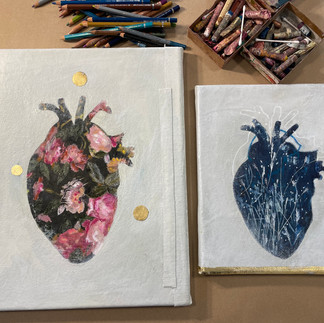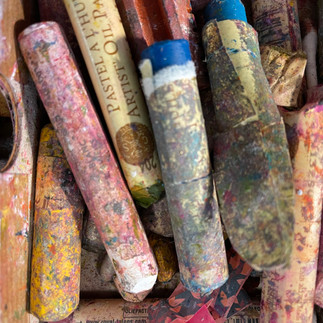"The Symphony of Shades: The Importance of Color in Art"
- Karenina Fabrizzi

- Feb 20, 2023
- 2 min read
A Journey Through the Expressive Language of Hues
Colors are the lifeblood of art, imbuing our creations with emotion and soul.
From bold and bright to soft and subtle, each color on the palette has a unique voice that speaks to the heart. Artists have long understood the power of color, and have used it to create some of the most iconic works of art in history.
Vincent van Gogh's bold, bright color palette was characterized by vibrant yellows, deep blues, and fiery oranges, while Georgia O'Keeffe's use of subtle, muted colors often featured pale pinks, grays, and blues.
Other artists like Wassily Kandinsky's work was known for its use of bold, contrasting colors, including bright yellows, deep blues, and fiery reds, while Claude Monet was a master of color, using a wide range of hues including pastel colors, warm yellows, and oranges.
Other iconic artists, such as Frida Kahlo, Kiki Smith, and Egon Schiele, have also created their own unique color palettes. Kahlo's paintings often featured bold, bright colors like shades of red, yellow, and green, while Smith was fond of using muted, earthy tones like brown, gray, and green.
One of my favorite artist, Egon Schiele works was known for its expressive use of color, often using deep blues, fiery oranges, and bright yellows.
The art of color is a language that speaks beyond words, one that transcends cultural and societal barriers. Colors carry with them the weight of history and culture, symbols that speak of love, joy, or even mourning. In the hands of the artist, colors are a tool to create a unique vision, imbuing each brushstroke with a sense of purpose and meanSo, choose your colors with care, and let them breathe life into your art, for they are the very essence of the emotion and soul that makes art so powerful.
#colortheory #artisticexpression #soulfulcreations #paintingwithpassion #artisticlanguage #emotionalpalette #creatingwithcolor #artandculture #meaningfulart #artisticvision #vangoghcolors #okeeffepalette #kandinskyvibes #monetcolors #artistinspiration #boldcolor #earthytone #expressivecolor #colorfulart #colorfulcreativity #artistcolorpalettes #fridakahloinspired #kikismithpalette #egonschielecolors









Comments